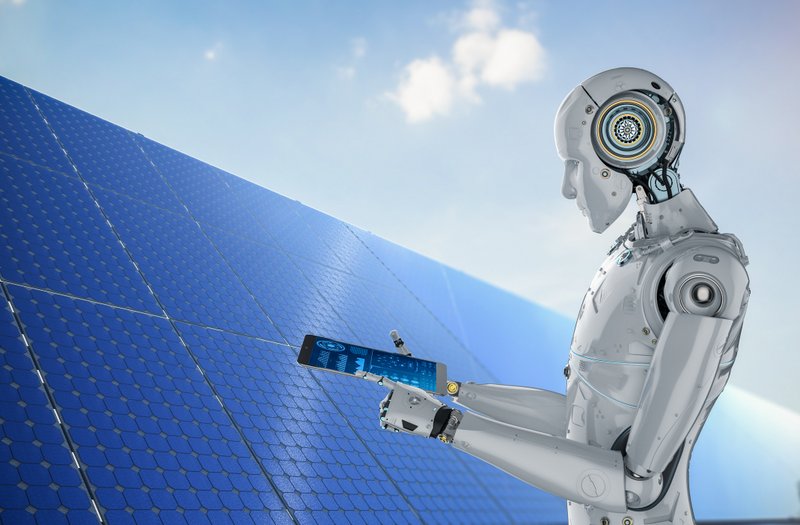
Introduction
The rapid development of technology has brought significant advancements in various industries, including the field of solar energy. Solar systems have become an increasingly popular and sustainable source of power generation. With the emergence of artificial intelligence (AI) and machine learning (ML), the optimization of solar systems has reached new heights. This article explores the relevance of AI and ML in optimizing solar systems and highlights their importance in the renewable energy sector.
Historical Background
Solar systems have evolved over time, with early civilizations using passive solar design principles for heating and lighting. Active solar systems were later developed, focusing on improving the efficiency of solar panels and maximizing energy generation. However, it wasn’t until the introduction of AI and ML that solar systems truly began to reach their full potential in terms of optimization.
Key Concepts and Definitions
Artificial Intelligence (AI) refers to the simulation of human intelligence in machines that are programmed to think and learn like humans. Machine Learning (ML), a subset of AI, involves the use of algorithms that enable machines to learn from and analyze data, improving their performance over time. In the context of solar systems, optimization refers to the process of maximizing energy generation, efficiency, and overall performance. Data analytics plays a crucial role in identifying patterns and trends in solar systems, allowing for better decision-making and optimization strategies.
Main Discussion Points
Point 1: Integration of AI and ML in solar systems
The integration of AI and ML in solar systems brings numerous benefits. These technologies enable real-time monitoring and analysis of system performance, leading to improved efficiency and reduced maintenance costs. Automation of system operation and maintenance tasks reduces human error and increases reliability. With AI and ML, solar systems can adapt to changing environmental conditions, optimizing energy generation and efficiency.
Point 2: Predictive analytics and forecasting
AI and ML algorithms play a crucial role in accurate solar forecasting. By analyzing historical weather data and real-time conditions, these algorithms can predict solar energy generation with high accuracy. This helps in optimizing energy storage and distribution, ensuring that excess energy is stored for later use. Predictive maintenance and fault detection algorithms can detect and address issues in solar systems before they escalate, minimizing downtime and maximizing performance.
Point 3: Intelligent control and decision-making
AI and ML algorithms enable intelligent control and decision-making in solar systems. Real-time data analysis allows for optimal power generation and grid integration, ensuring that solar energy is efficiently utilized. Adaptive control strategies help solar systems adjust to changing environmental conditions, maximizing energy output. These algorithms also assist in load balancing and demand response, allowing for a more stable and reliable power grid.
Case Studies or Examples
Case study 1: Solar farm optimization using AI and ML
A solar farm in California implemented AI and ML algorithms to optimize energy generation. The algorithms analyzed weather data, historical performance, and real-time conditions to determine the most efficient operation parameters. This resulted in a significant increase in energy output and a reduction in maintenance costs.
Case study 2: AI-based solar forecasting for grid integration
In Australia, an AI-based solar forecasting system was implemented to improve grid integration. The system analyzed weather patterns and historical energy generation to predict solar output accurately. This allowed grid operators to optimize energy distribution and minimize the need for fossil fuel-based backup power.
Case study 3: ML algorithms for fault detection in solar panels
A solar installation in Germany utilized ML algorithms to detect faults in solar panels. By analyzing electrical signals and performance data, the algorithms could identify potential issues in real-time. This proactive approach to maintenance significantly reduced downtime and improved overall system performance.
Current Trends or Developments
Recent advancements in AI and ML techniques have further enhanced solar system optimization. Integration of Internet of Things (IoT) devices allows for real-time monitoring and control of solar systems, optimizing performance. Big data analytics provides valuable insights into system behavior, enabling better decision-making. Research findings indicate that AI and ML techniques have a significant positive impact on the performance and efficiency of solar systems.
Challenges or Controversies
The adoption of AI and ML in solar systems raises concerns about privacy and security. As more data is collected and analyzed, ensuring the protection of sensitive information becomes crucial. Ethical considerations also arise when using AI algorithms for decision-making, as biases and unintended consequences can occur. Additionally, there are concerns about potential job displacement and the impact on the workforce as automation and AI technologies become more prevalent in the solar industry.
Future Outlook
The future of solar system optimization looks promising with advancements in AI and ML. These technologies will continue to play a pivotal role in improving energy generation and efficiency. Integration of renewable energy sources and smart grids will enable better utilization of solar power and further reduce reliance on fossil fuels. The impact of optimized solar systems on sustainability and climate change mitigation cannot be overstated.
Conclusion
In conclusion, the integration of AI and ML in solar systems has revolutionized the optimization process. The benefits of these technologies, such as enhanced energy generation, automation, and predictive analytics, are driving the widespread adoption of AI and ML in the renewable energy sector. As advancements continue and challenges are addressed, solar systems will become even more efficient, contributing to a more sustainable future.